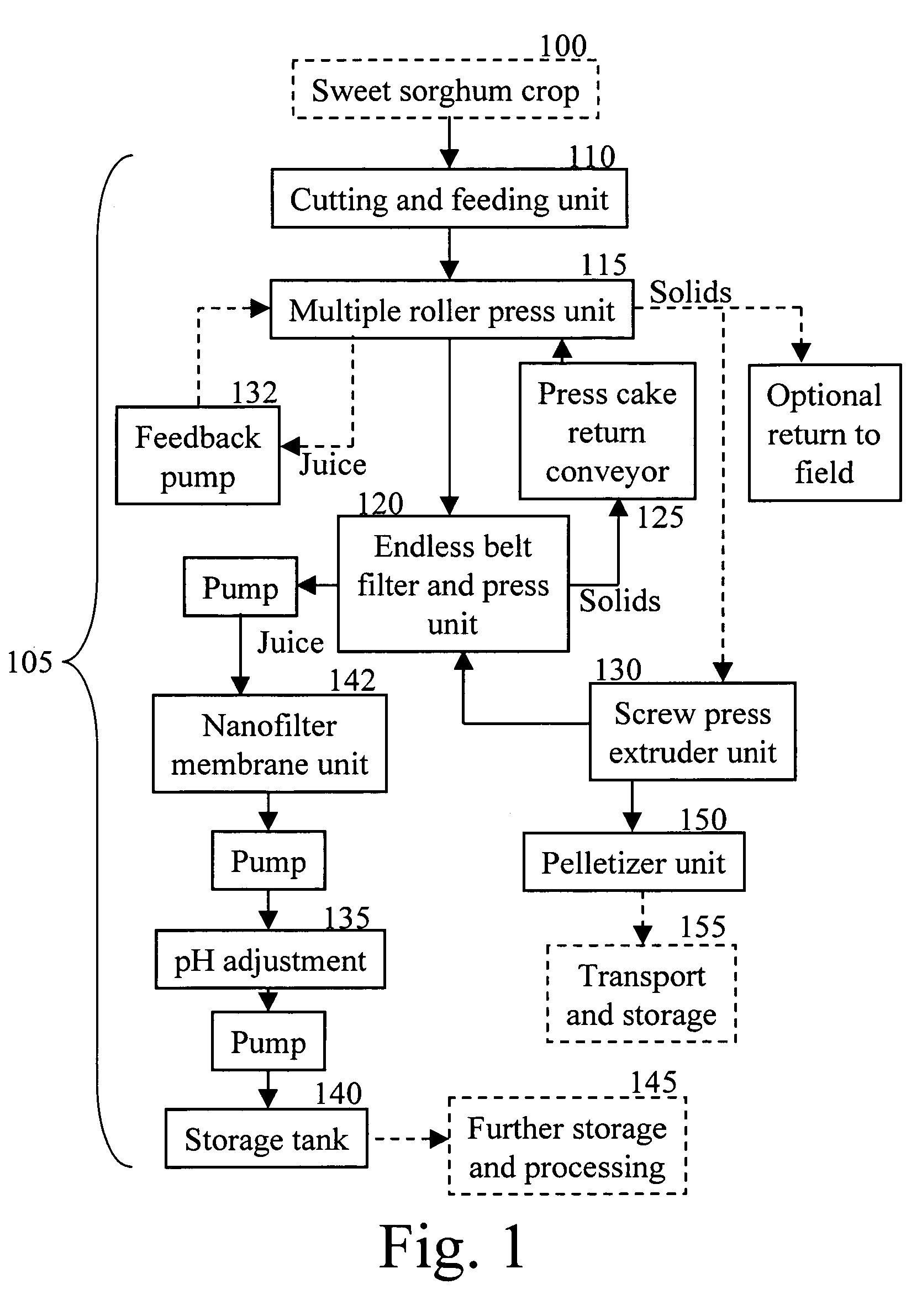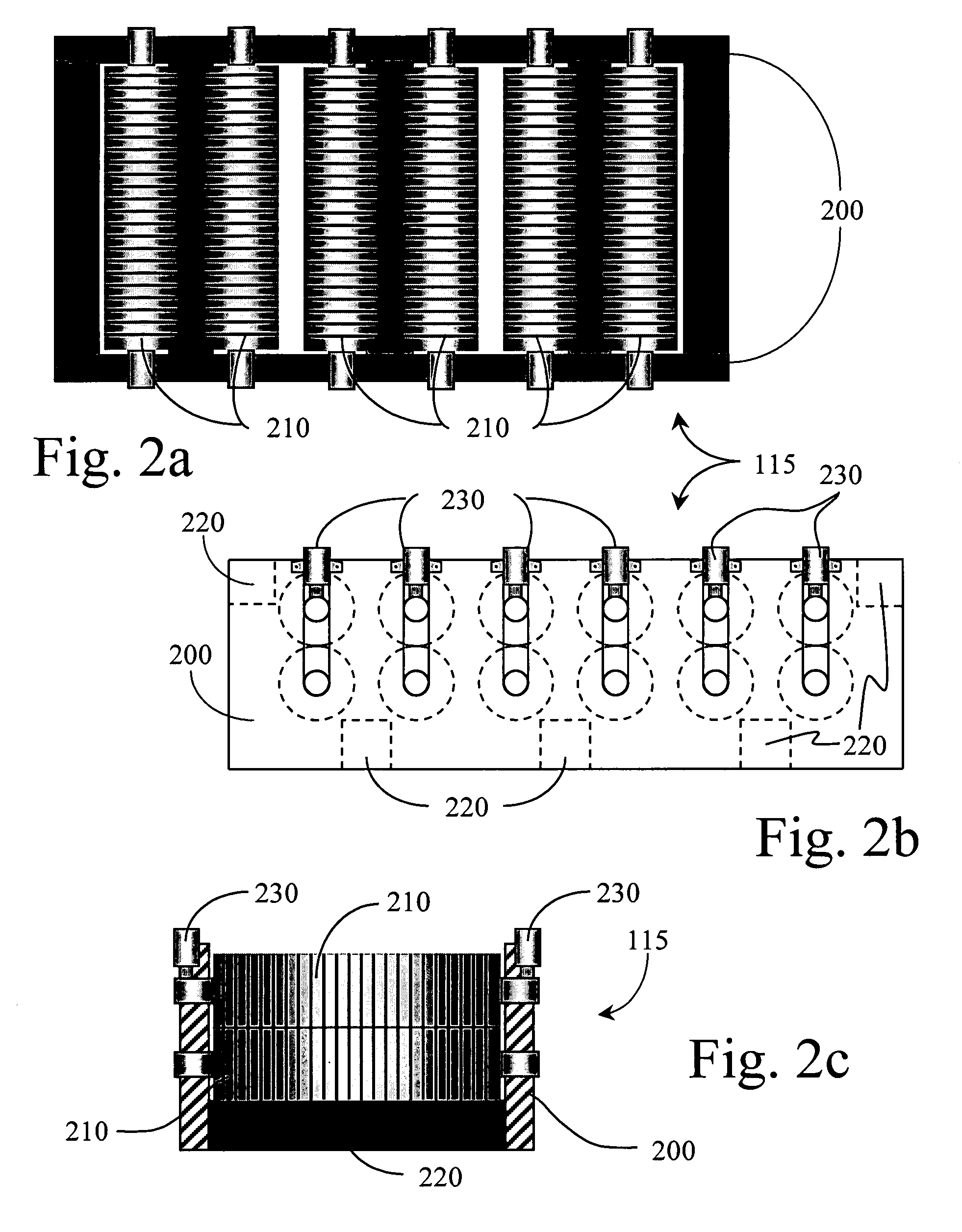Field harvester for sweet sorghum
a field harvester and sweet sorghum technology, applied in the field of sweet sorghum field harvester, can solve the problems of large amount of crop and large manual labor, and achieve the effect of reducing the bacterial action
- Summary
- Abstract
- Description
- Claims
- Application Information
AI Technical Summary
Benefits of technology
Problems solved by technology
Method used
Image
Examples
Embodiment Construction
[0021]A flow diagram for a mobile sweet sorghum field harvester 105 is shown in FIG. 1. At the top, the sweet sorghum crop 100, mature for harvest, is harvested by the field harvester 105. The cutting and feeding unit 110 (which may be a row-type or rowless header unit) cuts the crop off near the ground and feeds it into a multiple roller press unit 115 for the primary step of separating the juices from the solids. The extracted juices are passed to an endless belt filter press unit 120, where the solids are strained out of the juice. From the endless belt filter press unit 120, the solids continue via a filter cake return conveyor 125 (in the form of an auger or continuous web chain, or other conveyor) that returns them to the multiple roller press unit 115 for additional juice extraction. The solids exiting the multiple roller press unit 115 may pass to an optional screw press unit 130 where the last of the juice to be extracted is removed, or they may be returned to the field.
[00...
PUM
 Login to View More
Login to View More Abstract
Description
Claims
Application Information
 Login to View More
Login to View More - R&D
- Intellectual Property
- Life Sciences
- Materials
- Tech Scout
- Unparalleled Data Quality
- Higher Quality Content
- 60% Fewer Hallucinations
Browse by: Latest US Patents, China's latest patents, Technical Efficacy Thesaurus, Application Domain, Technology Topic, Popular Technical Reports.
© 2025 PatSnap. All rights reserved.Legal|Privacy policy|Modern Slavery Act Transparency Statement|Sitemap|About US| Contact US: help@patsnap.com



